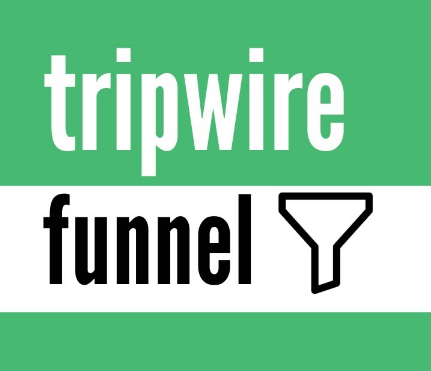In the ever-changing arena of online marketing, one word that tends to pop up—particularly when discussing customer acquisition and conversion rate optimization—is the Tripwire Funnel. It sounds like something off a Cold War thriller, but a Tripwire Funnel is actually a tactical marketing strategy to convert cold leads to paying customers in a hurry and with precision.
In this post, we’re going to walk you through what a Tripwire Funnel is, give you an example, and guide you step-by-step on how to build one that converts.
What is a Tripwire Funnel?
A Tripwire Funnel is a sales funnel tactic that entails presenting a low-priced, irresistible product or service (the tripwire) that converts prospects into paying customers. The objective isn’t to make money from the tripwire itself but to establish trust, create momentum, and pave the way for greater-ticket sales in the future.
Imagine it as a “foot in the door” offer.
Once a person becomes a paying customer, even at a very modest price point, they’re much more likely to purchase from you again. Psychologically, they’ve made that all-important leap from “prospect” to “buyer,” and that shifts things entirely.
The Psychology Behind Tripwire Offers
The tripwire funnel’s magic is based on consumer psychology. Here’s why it works:
Micro-Commitment: By making a person commit to a small offer (typically less than $50), you decrease resistance and create habits of purchasing.
Reciprocity: You provide huge value for a low price, and people feel as if they “owe” you by thinking about future offers.
Trust-Building: After you provide value with the tripwire, customers start trusting your company and your products.
Customer Conversion: You can much more easily upsell to someone who has already bought compared to cold-converting someone.
Tripwire Funnel Example
Suppose you have a fitness coaching business. Here’s what a Tripwire Funnel could look like:
- Lead Magnet (Freebie)
Offer: “Free 7-Day Meal Plan for Fat Loss”
Objective: Get email addresses
- Tripwire Offer
Offer: “14-Day Fat-Burning Home Workout Program for $9”
Value: Usually sold for $49
Objective: Convert leads into paying customers
- Core Offer (Upsell)
Offer: “Complete 12-Week Transformation Program for $99”
Timing: After buying the tripwire or through email series
Objective: Create actual profit and long-term value
- High-Ticket Offer (Back-End)
Offer: “1-on-1 Online Coaching for $499/month”
Objective: Maximize customer lifetime value
With this tripwire, even if you’re selling the tripwire offer at cost or even a loss, you can have an extremely high conversion rate to the core offer and high-ticketed services because you’ve gained the buyer’s trust.
How to Build a Tripwire Funnel (Step-by-Step)
Now that you know the concept and psychology, let’s go through how to build a tripwire funnel step by step.
Step 1: Know Your Customer Journey
Before constructing anything, ask yourself:
What is the problem your audience is attempting to solve?
At what level of awareness are they currently (cold, warm, hot)?
What would get them to exclaim, “Yes, I want this!” instantly?
Knowing your ideal customer makes it easier to tailor your tripwire to match their immediate desire.
Step 2: Construct a High-Value Lead Magnet
Your lead magnet is the bait. Make it a quick win and extremely relevant to your paid product.
Examples:
Ebook or checklist
Free webinar
Email course
Trial software
Templates or swipe files
Pro Tip: Your lead magnet should logically flow into your tripwire offer. If they download a free email marketing checklist, the next logical step might be a $7 email template package.
Step 3: Write Your Irresistible Tripwire Offer
This is where most marketers fail—either their offer is too light or it costs too much.
Key characteristics of an amazing tripwire:
Price: Usually between $1 to $49
Value: Should appear to be worth 5x–10x the price
Instant Gratification: It must be digital or instant access
High relevance: It should solve an immediate problem that has a close connection with your main product
Examples:
$9 toolkit for social media managers
$27 mini-course for personal branding
$7 planner for freelancers
Step 4: Build the Funnel Mechanism
Here’s one simple structure:
Landing Page: Collect emails via your lead magnet.
Thank You Page: Give the tripwire away right away (with urgency or scarcity if you can).
Order Page: Simple, clean checkout page with reviews and transparent value.
Upsell Page: Immediately after the sale, promote the core product or membership.
Follow-up Email Sequence:
Welcome Email
Value-rich content
Introduce main offer
Case studies or social proof
Scarcity/urgency email
Tools to create your funnel:
ClickFunnels
Kajabi
Leadpages
Kartra
WordPress + Elementor + WooCommerce (advanced users)
Step 5: Test, Optimize, and Scale
Once your funnel is live:
Track Metrics: Measure opt-in rate, tripwire conversion rate, AOV, and ROI.
A/B Test: Headlines, prices, product images, and CTA buttons.
Upsell More: Include order bumps or second upsells for more revenue.
Drive Traffic: Utilize Facebook/Instagram Ads, Google Ads, SEO, or email marketing.
Just remember, you’re not attempting to profit on the tripwire—you’re acquiring qualified buyers at breakeven so that your upsells and back-end offers create profit.
Tripwire Funnel Best Practices
Provide Blatant Value: Blow your buyer away with the amount of value they receive for so little cash.
Apply Scarcity Strategically: Temporary discounts or bonuses will cause people to tip over.
Target One Problem: Don’t attempt to fix everything with a single tripwire.
Form Relationships: The tripwire is merely the start—utilize email to win trust and teach.
Provide Instant Access: Customers adore instant gratification—ensure your tripwire provides quick wins.

